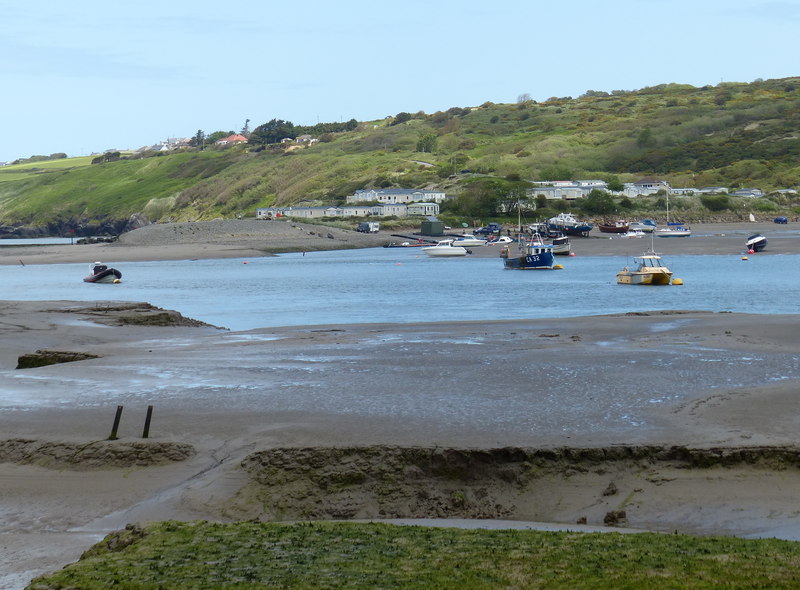Estuary
Pictured above is the estuary of the River Teifi (Afon Teifi).
There are many different variations of an estuary, but in most basic terms it is defined as the tidal mouth of a river where the tide and stream meet. It is semi-enclosed and is connected to the sea, so estuaries generally contain seawater (or coastal brackish water) mixed with freshwater that has drained from the land. However, some estuaries - particularly those along freshwater lakes before connecting to the sea and so may not mix with seawater.
Estuaries often have an identifiable ecosystems and act as natural filters for runoff to support plant, bird, fish and other animal communities by providing food, breeding grounds and places to rest during migration. They can be susceptible to degradation based on conditions such as erosion, overdevelopment and pollution.
As transition zones between freshwater and seawater, estuaries display oceanic properties, experiencing rising tides and waves and registering saltwater content. They also mimic the properties of rivers by registering freshwater flow and producing sediment.
The four most common types of estuaries classified by their geology are:
Estuaries can also be classified by their water circulation patterns. The most common types are salt wedge, partially mixed, well-mixed, inverse and intermittent.
[edit] Related articles on Designing Buildings Wiki
Featured articles and news
RTPI leader to become new CIOB Chief Executive Officer
Dr Victoria Hills MRTPI, FICE to take over after Caroline Gumble’s departure.
Social and affordable housing, a long term plan for delivery
The “Delivering a Decade of Renewal for Social and Affordable Housing” strategy sets out future path.
A change to adoptive architecture
Effects of global weather warming on architectural detailing, material choice and human interaction.
The proposed publicly owned and backed subsidiary of Homes England, to facilitate new homes.
How big is the problem and what can we do to mitigate the effects?
Overheating guidance and tools for building designers
A number of cool guides to help with the heat.
The UK's Modern Industrial Strategy: A 10 year plan
Previous consultation criticism, current key elements and general support with some persisting reservations.
Building Safety Regulator reforms
New roles, new staff and a new fast track service pave the way for a single construction regulator.
Architectural Technologist CPDs and Communications
CIAT CPD… and how you can do it!
Cooling centres and cool spaces
Managing extreme heat in cities by directing the public to places for heat stress relief and water sources.
Winter gardens: A brief history and warm variations
Extending the season with glass in different forms and terms.
Restoring Great Yarmouth's Winter Gardens
Transforming one of the least sustainable constructions imaginable.
Construction Skills Mission Board launch sector drive
Newly formed government and industry collaboration set strategy for recruiting an additional 100,000 construction workers a year.
New Architects Code comes into effect in September 2025
ARB Architects Code of Conduct and Practice available with ongoing consultation regarding guidance.
Welsh Skills Body (Medr) launches ambitious plan
The new skills body brings together funding and regulation of tertiary education and research for the devolved nation.
Paul Gandy FCIOB announced as next CIOB President
Former Tilbury Douglas CEO takes helm.
UK Infrastructure: A 10 Year Strategy. In brief with reactions
With the National Infrastructure and Service Transformation Authority (NISTA).























